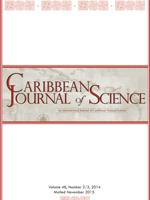We studied the bird communities of five contrasting semi-natural habitats of Lac Bay, Bonaire, South-eastern Caribbean, during the fall of 2011. A total of 420 point counts were conducted in five different habitats and 63 species were detected. Of these, 31 (49%) were migrants, 24 (38%) were residents, 6 (10%) occurred both as residents and migrants and 2 (3%) were migrants that possibly or irregularly breed. Most migratory species were shorebirds and waders (76%). The bird communities of the five habitats studied showed significant differences in species composition and associated community parameters. Mangrove thicket and salt flat habitats had roughly a two-fold higher total species richness and a four-fold higher migratory species richness compared to woodland habitats. In woodland habitats, breeding residents dominated, whereas migratory shore and waterbirds dominated in salt flat habitat. The Northern Waterthrush, Parkesia noveboracensis, and Barn Swallow, Hirundo rustica, were the numerically most important migratory passerines. The Reddish Egret, Egretta rufescens, a globally Near-Threatened species, ranked among the top 10 most abundant species of the Lac Bay salt flat habitat. Our results suggest that the relatively expansive hypersaline wetlands of Bonaire (of which Lac is only a small part) may be of special significance to migratory shore and waterbirds. In contrast to other areas of the Caribbean, invasive exotic birds so far play a minor role in the communities studied.
How to translate text using browser tools
1 June 2014
Bird Communities of Contrasting Secondary Habitats of Bonaire, in the Arid South-Eastern Caribbean
Adolphe O. Debrot,
Rob van Bemmelen,
Jerry Ligon
ACCESS THE FULL ARTICLE

Caribbean Journal of Science
Vol. 48 • No. 2–3
2014
Vol. 48 • No. 2–3
2014
avian community
invasive species
mangrove
migration
—Southern Caribbean
tropical dry forest




